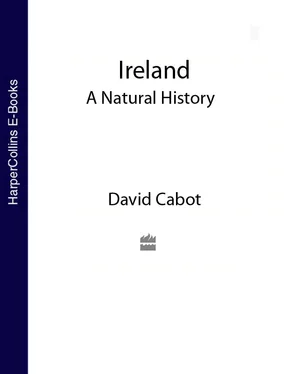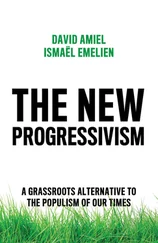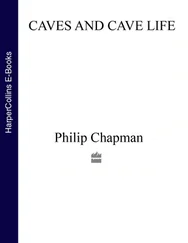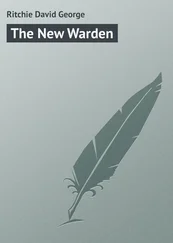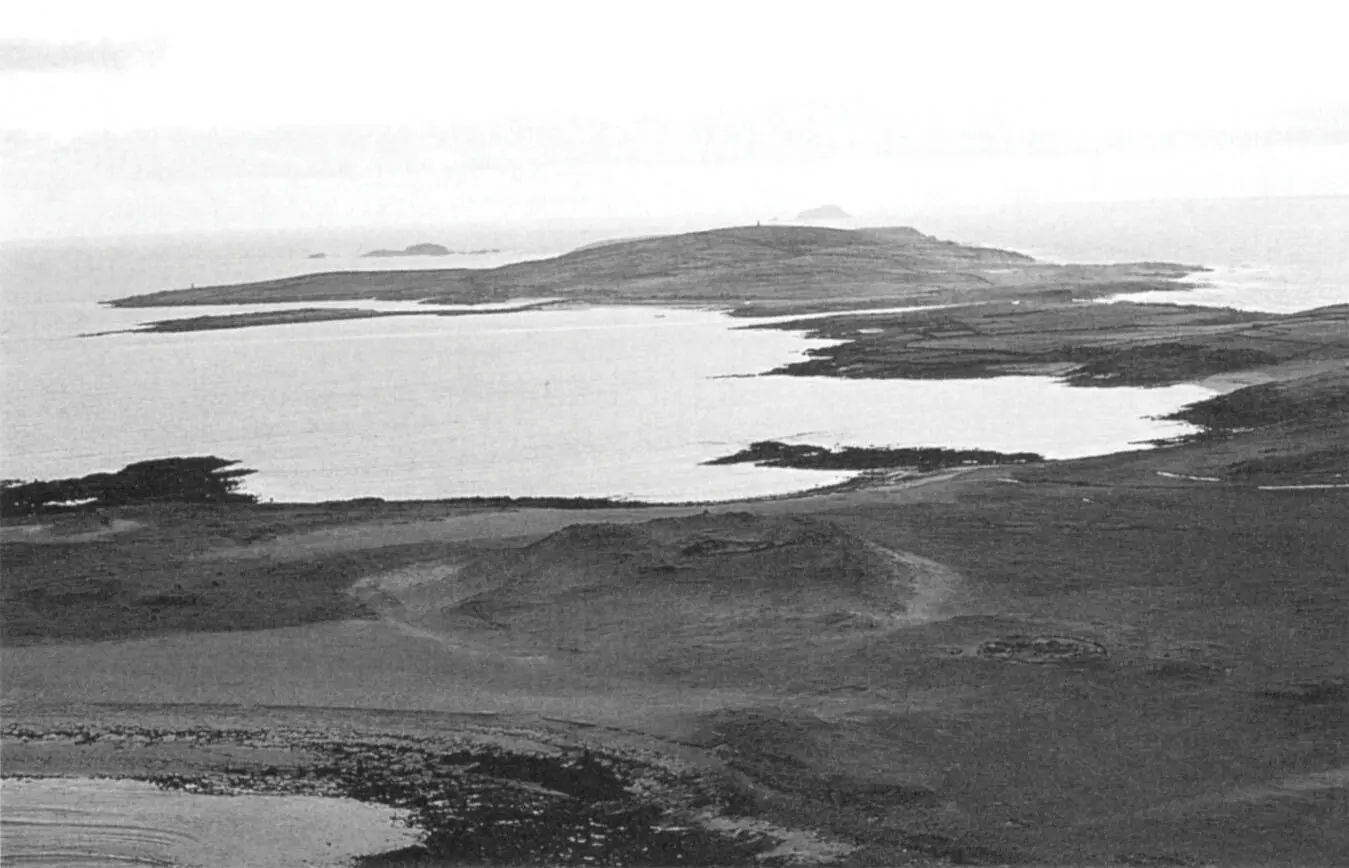
Remains of a sixth or early seventh century monastic settlement perched on the summit of the Bailey Mór, Inishkea North, Co. Mayo.
Early Christian monks and their nature poetry AD 600–800
From their austere and silent cells and monasteries the early Christian monks spoke eloquently of a love for the natural world. These men, scattered throughout the countryside, had plenty of time at their disposal to become the first observers of natural patterns, rhythms and cycles, and of a wide variety of living creatures, all of which had God for a cause. As well as being uplifting, their poetry yields to us today information regarding the natural surroundings with which they were familiar.
One of the better known poems from this period is Tánic sam on the coming of summer, taken from a Bodleian Library manuscript dating from the twelfth century but considered by James Carney to have originally been composed in the mid-ninth century or possibly earlier, and published by the Irish scholar Kuno Meyer. 5,6The version here was translated by Greene & O’Connor. 1
‘Summer’s come, healthy free, that bows down the dark wood;
The slim, spry deer jumps and the seal’s path is smooth.
The cuckoo sings sweet music, and there is smooth, soft sleep.
Birds skim the quiet hill and the swift grey stags.
The deer’s lair is too hot, and active packs cry pleasantly;
The white stretch of strand smiles and the swift sea grows rough.
There is a noise of wanton winds in the palace of the oakwood of Drumdell;
The fine clipped horses who shelter in Cuan Wood are rushing about.
Green bursts out from every plant; leafy is the shoot of the green oakwood.
Summer has come, winter gone, twisted hollies hurt the stag.
The hardy blackbird who owns the thorny wood sings a bass;
The wild, weary sea reposes and the speckled salmon leaps.
Over every land the sun smiles for me a parting greeting to bad weather.
Hounds bark, stags gather, ravens flourish, summer’s come.’
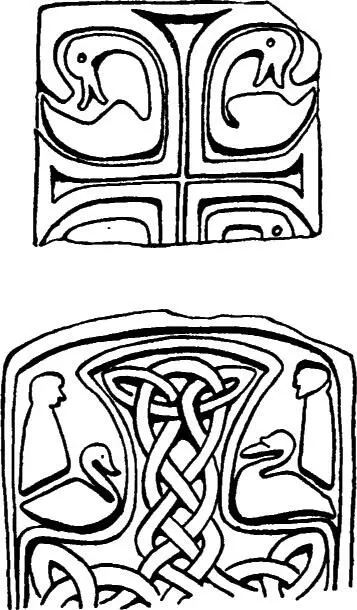
Carvings (c. seventh to eighth centuries) on slabs, Inishkeel, Co. Donegal.
Hunting scene (c. 790 AD), Bealin Cross, Co. Westmeath. From F. Henry (1965) Irish Art in the Early Christian Period (to 800 AD). Methuen & Co. Ltd., London.
A limited analysis of some ten of these early nature poems published by Jackson 7and Greene & O’Connor 1revealed that of 33 references to mammals, 19 were of (red) deer, stags, hinds and fawns, with many references to the stag’s roaring and bellowing. 8Next in occurrence were swine and boars (five mentions each) followed by three for badgers, two each for wolves and foxes and one each for the otter and seal (grey or common). Of the feathered creatures, the blackbird is cited most frequently (nine mentions) followed by four for the cuckoo and three each for the crane, heron and ducks. There are two references to a ‘woodpecker’, a species no longer resident in Ireland. Trees feature prominently with most citations being of the oak (six mentions), followed by yew (four) and three each for hazel, rowan and apple. Birch and ash carry two references. Hazel nuts were obviously of great significance, judging by the frequent references to them. Acorns and sloes were the next most noted. Of the plants and wildflowers mentioned, water-cress was the most prominent, followed by ivy, bracken, cottongrass, yellow iris, honeysuckle, marsh pennywort and saxifrage. The monk’s culinary interests were reflected by references to wild garlic, fresh leeks and wild onions.
What do these early nature poems tell us about the natural world of Ireland as seen by the monks about 1,150 years ago? Firstly, the location of the observers determined their commentary and, contrary to the general impression that they lived in the fastness of remote islands off the west coast, most monks resided in monasteries located in the Midlands. Their poetry conjures up an auspicious mix of woodlands, pastures, lakes and rivers. Those religious men dwelled in a much richer and more biologically diverse environment than today’s, populated by several large mammals and bird species which subsequently became extinct. Red deer were clearly widespread and frequent due to more extensive deciduous woodland cover (of which the Irish red deer makes a greater use than its European counterparts). Also present in these woods were wolves and wild boars, not yet exterminated by man.
The descendants of the wolves from the early Christian period had mostly disappeared by 1700 but struggled on until 1786, when the last specimen was exterminated in Co. Carlow. Wild boar were formerly the most abundant of wild animals of Ireland. Their bones were found associated with the first known human settlers in Ireland some 9,000 years ago. According to Thompson 9they continued to be plentiful down to the seventeenth century, but their date of extinction is not known nor is it recorded when they were last seen. Robert Francis Scharff (1858–1934), Keeper of the Natural History Museum, Dublin, from 1890 until 1921, believed that the degenerate wild pigs seen by Giraldus Cambrensis during the late twelfth century were descended from domesticated stock introduced by the first Neolithic farmers some 6,000 years ago, but that also present with these feral pigs were descendants of the old European wild boar which he claimed had been present in prehistoric Ireland.
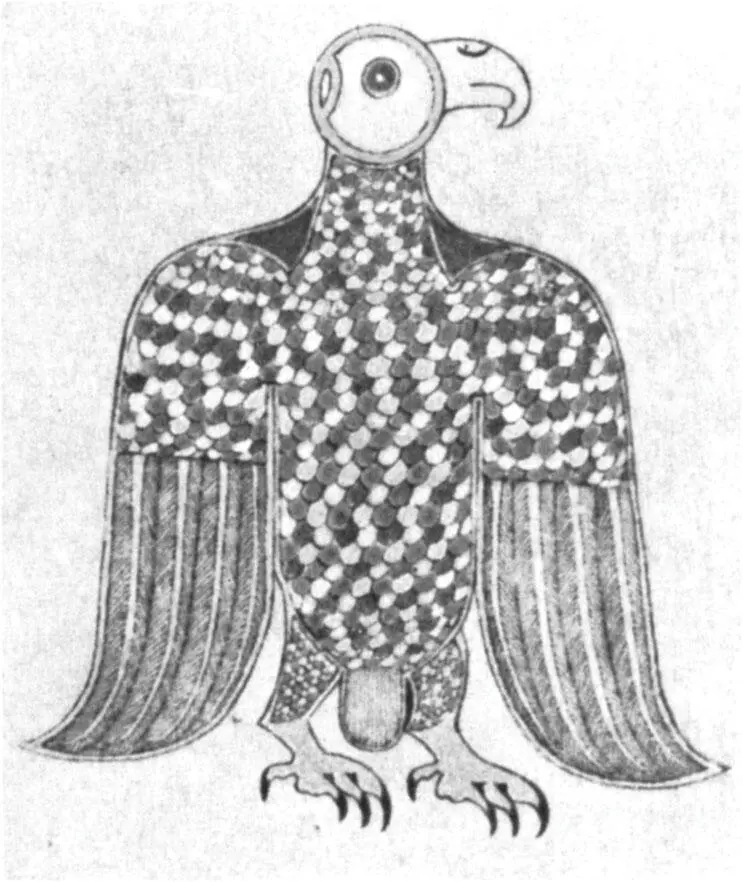
Eagle. Book of Durrow (late eighth or early ninth century). (The Board of Trinity College, Dublin).
The corncrake and wild swans, distinguished by their striking and unmistakable calls, impressed the monks as summer and winter visitors respectively to earn several citations in the early poetry. Eagles in those days bred on the cliffs in remote areas: the white-tailed eagle survived in coastal regions in decreasing numbers until the early twentieth century, when it completely died out, and the golden eagle hung on until 1926 then remained extinct apart from a pair from the Mull of Kintyre in Scotland that bred on the Antrim coast from 1953–60. Remains of the great spotted woodpecker found in two separate caves in Co. Clare indicate that they were present in the primeval woods. They may have persisted to the ninth century, as suggested by several references to them in the nature poems, but by the twelfth century they would appear to have become extinct. They too fell foul of the shrinking woodlands. In contrast to these unfortunate species, the descendants of the badger and otter, also featuring in the monks’ observations, have maintained thriving populations and remained symbols of the countryside.
Augustin, the first naturalist
One Irish monk living in the seventh century, known as Augustin, composed an interesting text in 655 which, unlike many others, survived because of a superficial confusion between him and his virtual namesake, St Augustine, Bishop of Hippo (354–430), the founding father of the Christian Church. The Hibernian Augustin was fortunate – and so are we – to have his text Liber de Mirabilibus Sanctae Scripturae embedded in the third volume of most editions of the great St Augustine’s works, notwithstanding the 200 years separating the two men. Without such an occurrence of editorial laxity it is doubtful whether the writings of the lesser Augustin would have survived for posterity. 10
Читать дальше
